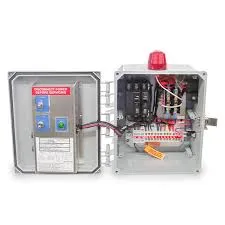How to Use Self-Amalgamating Rubber Tape A Comprehensive Guide
Self-amalgamating rubber tape is a versatile and reliable solution for insulating, repairing, and protecting electrical connections, as well as for various applications in plumbing, automotive, and other industries. Unlike conventional adhesive tapes, this type of tape fuses itself upon pressure, creating a waterproof and airtight seal without the need for adhesives. In this guide, we’ll explore how to effectively use self-amalgamating rubber tape for various projects.
Step 1 Prepare the Surface
Before applying self-amalgamating rubber tape, ensure that the surface is clean, dry, and free from dust or grease. Use a cloth or paper towel with a suitable cleaner to wipe down the area. For electrical applications, turn off the power to avoid any electrical hazards during the tape application.
Step 2 Measure and Cut the Tape
Unroll a specific length of self-amalgamating rubber tape needed for your project. The amount you require will depend on the size of the area you are covering. It’s usually advisable to cut a few extra inches to ensure complete coverage. Make sure to cut the tape with scissors to guarantee a clean edge.
Step 3 Start Wrapping
Begin wrapping the tape around the intended area, anchoring the tape by pressing it down at one end. When applying the tape, maintain slight tension and overlap each layer by about half its width. This overlap ensures that the tape fuses together adequately, preventing any gaps that could lead to exposure or failure of the seal.
Step 4 Apply Pressure
how to use self amalgamating rubber tape

As you continue to wrap, apply consistent pressure to the tape. The self-amalgamating property means that the tape will bond with itself as you apply pressure, forming a solid layer. Ensure that the twists or bends are adequately covered, as these areas are typically prone to stress and potential failure.
Step 5 Seal the Edge
Once you have covered the entire area, ensure the final edge is pressed down firmly. You can maintain this pressure for a couple of seconds to encourage better amalgamation. There is no need for a separate adhesive or bonding agent; the tape will fuse seamlessly at the edges.
Step 6 Curing Time
While self-amalgamating rubber tape cures quickly, allow it some time to set properly. It is usually ready for use within a few minutes, but for optimal sealing, avoid exposing it to moisture or electrical currents immediately after application.
Step 7 Safety Tips
Finally, remember to check the specifications of the self-amalgamating rubber tape you’re using. Some tapes are rated for certain temperatures and environments, so it’s essential to choose a product that fits your needs. Always prioritize safety by turning off power sources when working with electrical systems.
Conclusion
Self-amalgamating rubber tape is a simple yet effective tool for a variety of applications, providing excellent insulation and protection. By following these steps, you can ensure a secure and lasting result for your project. Whether you’re sealing electrical connections or repairing hoses, this tape will deliver reliable performance when used correctly.
-
XIANGFAN Rubber Tape-Ultimate Solutions for All Your Insulation NeedsNewsJun.24,2025
-
XIANGFAN Rubber Tape-Protection for Industrial and Residential ApplicationsNewsJun.24,2025
-
XIANGFAN Rubber Tape: Superior Safety and Sealing for Demanding EnvironmentsNewsJun.24,2025
-
XIANGFAN Rubber Tape: Reliable Solutions for Every Electrical ChallengeNewsJun.24,2025
-
XIANGFAN Electrical & Industrial Tape: Powering Reliability Across IndustriesNewsJun.24,2025
-
XIANGFAN Electrical & Industrial Tape: Excellence in Every ApplicationNewsJun.24,2025
